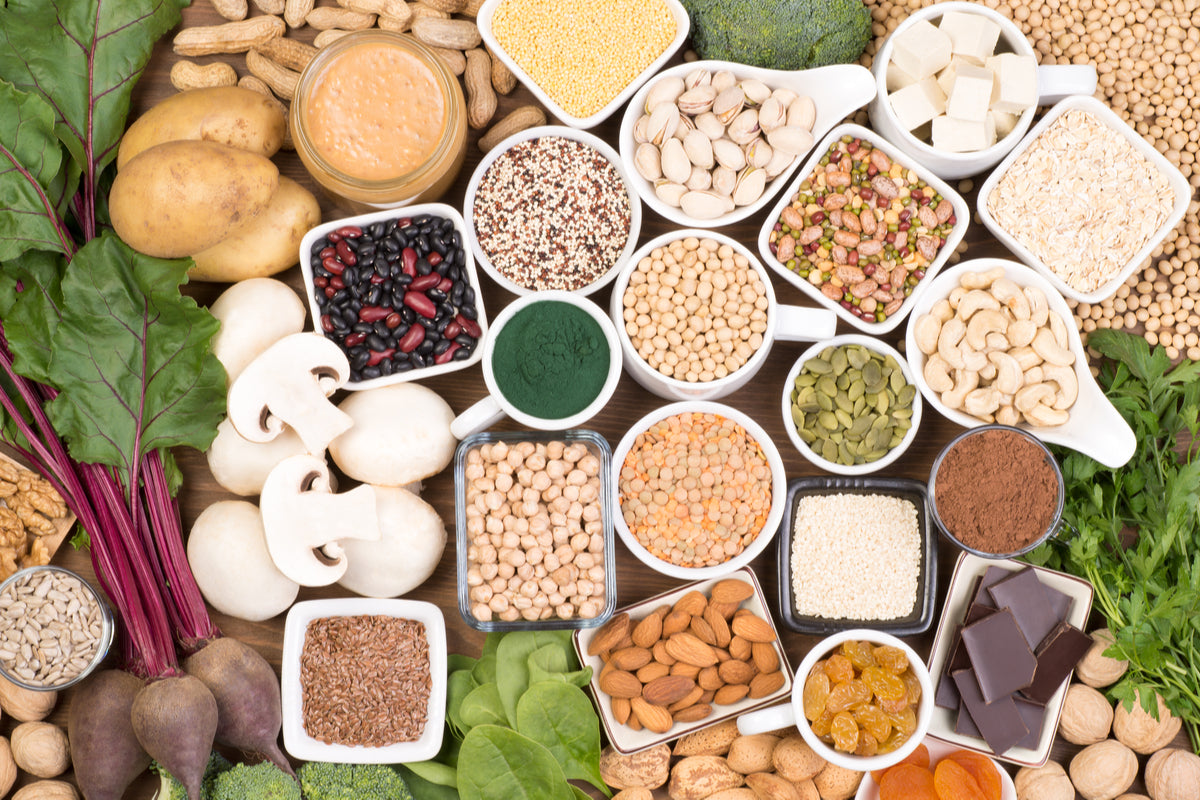
Quick Synopsis
Iron plays a crucial role in your body’s natural processes. But there’s a misconception that the best iron sources come from animal products, like red meat. The good news: getting enough iron on a plant-based diet isn’t difficult at all. We outline the difference between animal and plant-based iron sources, how much iron you really need, and how to get it on a plant-based diet.
The Full Story
Iron. It may not sound appetizing, but iron is vital to healthy eating and believe it or not, often comes in delicious packages.
Why do we need iron?
Iron is an essential mineral, along with other big names like magnesium, zinc, potassium, and iodine. Your body uses the iron to support its natural functions. Specifically, it’s a key component in hemoglobin, the molecule that red blood cells use to transport oxygen throughout your body. Don’t have enough iron? Then your body can't make enough healthy oxygen-carrying red blood cells. This leads to iron deficiency, which can be a real problem.
When we think about iron and food, people usually picture steak. And while it’s true red meat and other meats are rich sources of iron, there are plant-based sources of iron! That said, the iron found in animal products (specifically in the blood and the meat) is different from the iron we get from non-animal sources. And the iron from animals (called heme iron) is easier for our bodies to absorb (but this may not actually matter -- we’ll get to that in a minute).
So what does this mean for those who follow vegan and whole-food plant-based diets? Well, it turns out, it’s easy to get all the vital iron you need, without ordering a steak and cheese.
But before we get into some of our favorite plant-based iron sources, let’s take a look at just how much iron you actually need.
Recommended Iron Intakes
As is the case with most vitamins and minerals, the recommended iron intake varies according to age and gender. Women often need more iron than men, with pregnant women needing significantly more iron than everyone.
Here’s are the daily recommendations from the National Institute of Health:
- Children: 7-15 mg
- Women: 8-18 mg
- Pregnant Women: 27 mg
- Men: 8 mg
Does that seem like a lot? It’s really not! Balanced diets give you more than enough iron to get the job done — and that includes balanced plant-based diets. In fact, plant-based dieters aren’t any more likely to develop iron deficiency than meat eaters.
But wait. Didn’t we say that the vegan sources of iron were less absorbable than iron from animals? We sure did. There’s no way around it; plant-based dieters don’t get the heme iron found in meat…and that might actually be a good thing.
Heme vs. Non-Heme Iron
Heme iron is found in animal products, such as meat and poultry; non-heme iron is found in plant foods, like legumes and vegetables. Non-heme plant-based iron makes up about 85% - 90% of the iron intakes in Western populations.
Heme iron has a more efficient absorption rate in the body. But that’s not the whole story. Meat consumption is linked to increased risk of metabolic syndrome, coronary heart disease, atherosclerosis, stroke, type 2 diabetes, Alzheimer’s disease, Parkinson’s disease, arthritis, and cancer (to name a few).
So, if you’re not getting heme iron in your diet you can count yourself lucky. The non-heme iron in your plant-based may be slightly less effective when it comes to absorption, but it’s a whole lot more effective at not causing disease.
Besides, with a little bit of planning, you can improve your non-heme iron absorption. Pro tip: stock up on vitamin C! Taking 100 mg of Vitamin C while consuming iron sources can increase absorption by 67%. That’s about the amount of vitamin C in a single large orange.
Vitamin A and Beta-Carotene are also effective absorption boosters for the iron found in rice, wheat, and corn. Vitamin A and Beta-Carotene are abundant in whole plant foods, particularly dark leafy greens, citrus fruits, sweet potatoes, and bell peppers.
Anyone else hungry?
WFPB/Vegan Iron Sources
Ok, so you don’t need meat to get iron. Whew! But what should you eat specifically to get your iron from plants? Some of our favorite high-iron vegetables and plant foods include:
- Cooked spinach (1 cup = 6.4 mg)
- Firm tofu (4 oz = 6.4 mg)
- Lentils (1 cup = 6.4 mg)
- Chickpeas (1 cup = 4.7 mg)
- Tempeh (1 cup = 4.5 mg)
- Cooked Lima Beans (1 cup = 4.5 mg)
- Cooked black-eyed peas (1 cup = 4.3 mg)
Looking for a place to start with plant-based iron? Check out the MamaSezz recipe archive for delicious iron-rich recipes.
Key Takeaways: It’s easy to get iron on a plant-based diet!
Once you iron out all of the misconceptions, a healthy diet rich in iron is as easy as whole-food plant-based pie!
- Plant-based dieters are not more likely to be iron deficient than omnivores!
- Animal sources of iron come with health risks that don’t exist with plant-based sources.
- There are simple ways to increase the amount of iron your body can effectively use (hello Vitamin C!)

Hello every morning I take a take one tablespoon of black strap molasses
That also is a great way to get some iron into your diet